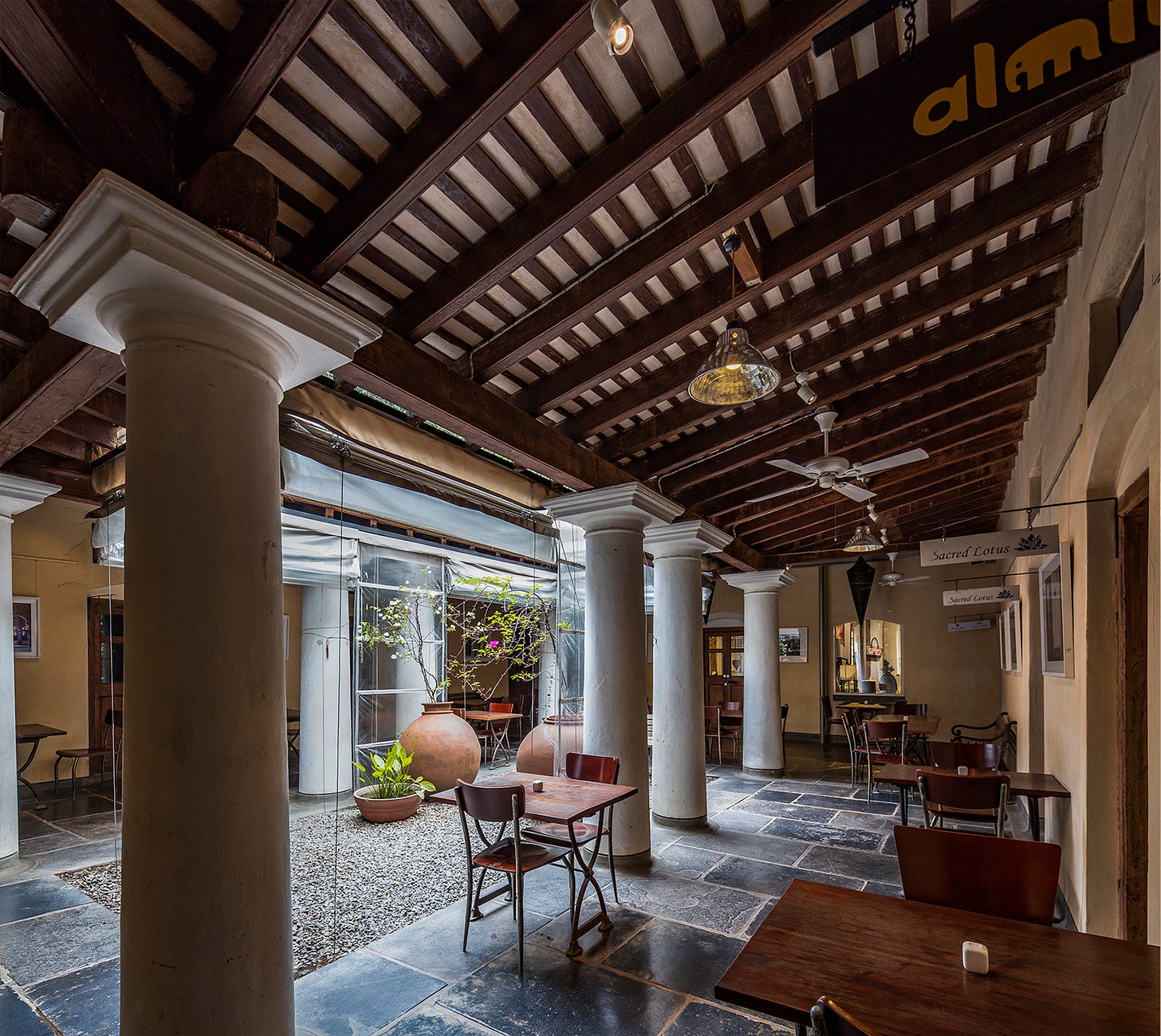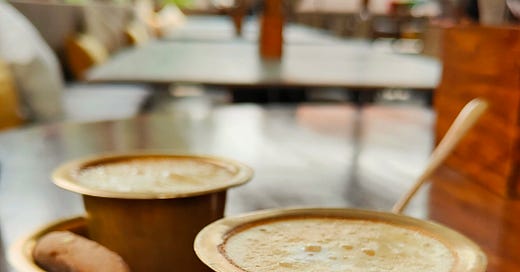What comes to mind when someone says “Bengaluru culture”? BLR Echoes is our attempt at finding out. From stories and reflections from the city to ideas brewed within this microcosm we call home, explore it with us. Of course, there’s always an exciting update on what we’re up to as well! Settle in and find out.
From Filter to Flat White: Bengaluru’s Coffee Journey
Bengaluru has quietly moved through three distinct waves of coffee culture over decades. Each wave hasn’t replaced the last, but has enriched the city’s evolving relationship with the bean. The first wave began in the 1920s, in a modest home in Basavanagudi, with an avant-garde pioneer– Doddamane Sakamma. Fondly known as ‘Coffee Pudi Sakamma’, she began making her own coffee powder and selling it to local households.
What started as a small enterprise soon made filter kaapi a staple across the city, and more than a drink; it became a ritual—an after-breakfast essential, an evening catch-up companion, and a beloved fixture in every Darshini and neighbourhood café that followed.
By the 1990s, the second wave brewed something more, something global. Brigade road housed the first Café Coffee Day and was hailed as the trendsetter of Bengaluru’s cafe culture. But to truly trace the roots, we need to wind the clock back to the early 1900s, in the bustling alleys of the Pete area. It was here that K.T. Appanna’s Hindu Coffee Club in Chickpete laid the foundation for café-style culture in the city, offering Bengaluru’s first sit-down coffee experience.
From the no-frills Darshinis to the rise of cafés, Bengaluru's café landscape began to shift in the '90s. New cafés catered to the shiny, internet dial-up generation and hanging out there felt ‘cool’. They became spaces for connection and conversation, and the humble cup turned into a lifestyle symbol.

The current coffee wave is fuelled by youth viewing coffee as an aspirational lifestyle choice. Once defined by its fast pace, Bengaluru’s café culture is shifting gears. Coffee workshops, craft driven brews, and even coffee raves are part of the cafe experience. Coffee has evolved into artisanal brews like cranberry cold brews, nitrogen infusions, saffron lattes, and even coffee cocktails. Cafés aren’t just pit stops anymore, but intentional spaces that invite you to stay, sip, and reconnect. Today we aren’t just sipping coffee–we’re sipping the city in a flux.
Hasiru Bengaluru: Growing a city that breathes with us
In our previous edition, we introduced Hasiru Bengaluru - a long-term vision to reimagine the city’s relationship with our green spaces. Today, we’re excited to share how that vision is shaping up.
Moving beyond tree planting, Hasiru Bengaluru focuses on long-term ecological restoration through native species, systems thinking, and community stewardship. This shift begins with a foresight and takes root across the city’s ecological fabric.
It begins with imagination and reinstating greenery as a core element of Bengaluru’s identity. Typology allows us to map and assess varied urban terrains (like lakes, BBMP lands, and buffer zones) and tailor the next steps accordingly. Through the ecosystem we focus on soil restoration, reviving water systems, and reintroducing native biodiversity through regenerative planting. Governance will help us collaborate with planning bodies and civic agencies to ensure restoration is built into the city’s blueprint. And none of this works without community—the people who live, learn, and lead on the ground. Ward leaders, RWAs, schools, and young people are at the heart of it, taking on the role of informed caretakers of their local environments and long-term stewards of their neighbourhoods.
This five-part framework was conceived on June 17th when UnboxingBLR and Rainmatter Foundation hosted a city-wide brainstorm with ecologists and civic institutions to build a sustainable model to restore Bengaluru’s green heritage. This is just the beginning—towards a Bengaluru that breathes better, together.
On Resilience, Reimagination, and Resolve: Geetanjali Kirloskar up next on FCTC
How does one bounce back from loss and run one of India’s biggest automobile brands? In the next episode of From Code To Culture, our host Malini Goyal sits down with Geetanjali Kirloskar, Chairperson and MD of Kirloskar systems and reflects on their parallel journeys in the media, and business landscapes over the last three decades. Tune in for insights about cross cultural partnerships, leadership lessons, and walk down the ad world’s memory lane.
Here’s a sneak peek:
That’s a wrap on this month’s newsletter. We have lots brewing in the next few months. In the meantime if have a story about Bengaluru you want to share, we’d love to hear from you.





Loved the post! Especially the story of coffee in the city